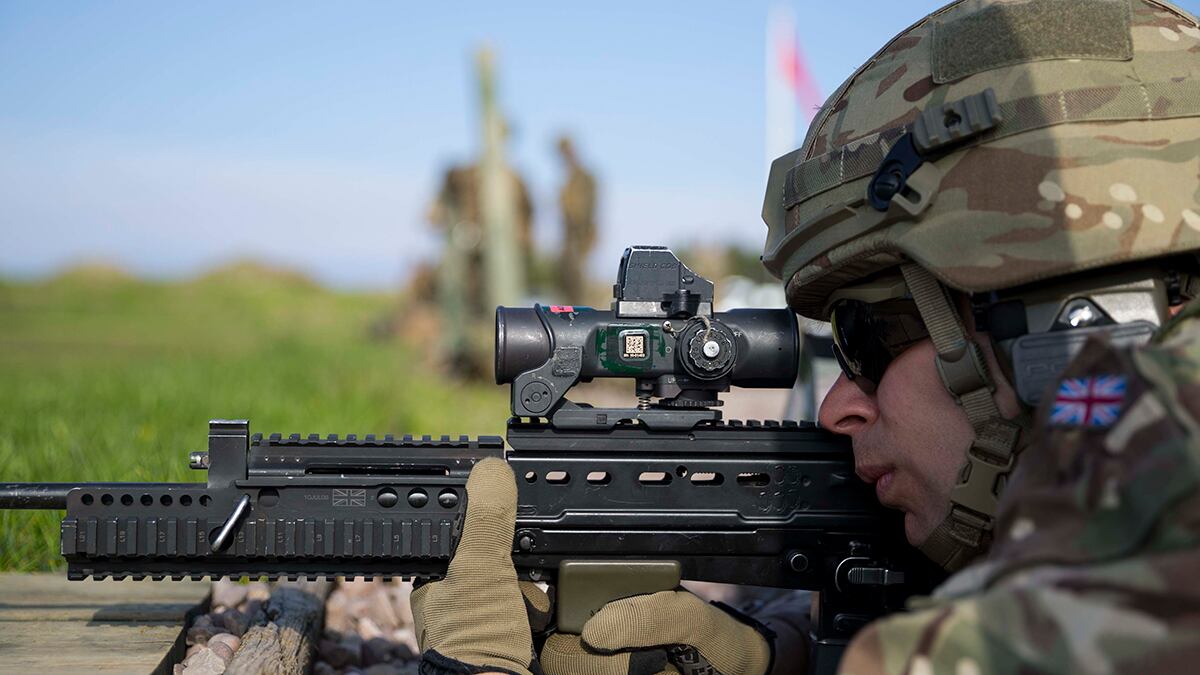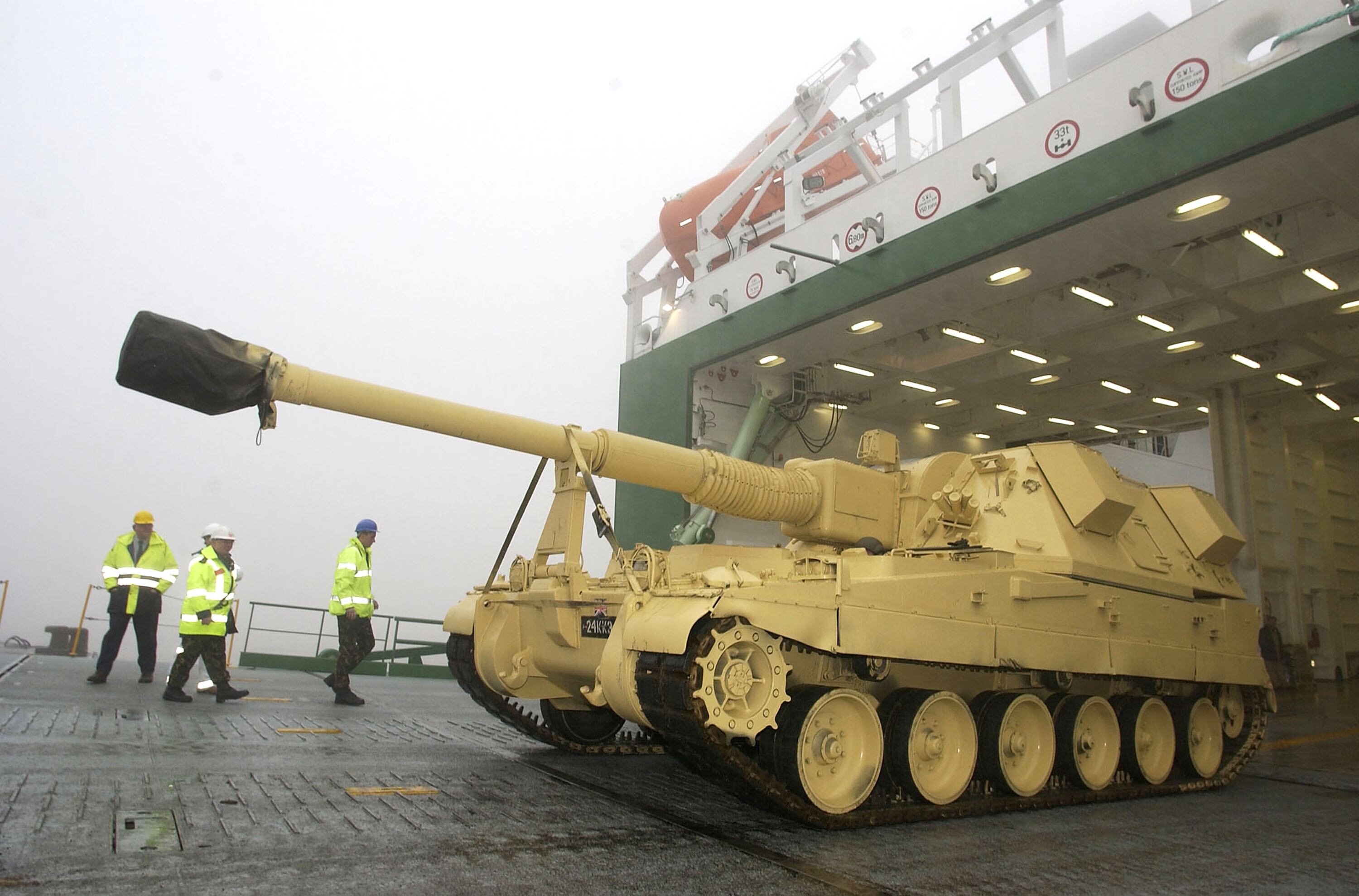LONDON — The limitations of the British Army’s ability to field modernized armored fighting forces in the 2020s have been laid bare in evidence submitted by the military to the parliamentary Defence Committee.
The Army admitted that by 2025 it would only be able to field a combat division consisting of just a single maneuver brigade and an interim maneuver support brigade.
A fully capable division including a new Strike brigade will not be available for fielding until the early 2030s — more than five years late, the Army said in written evidence published by the committee Oct 9.
One analyst here wondered what impact the admission would have on Britain’s allies.
"If you are the chief of staff of the U.S. Army, which still retains considerable heavy forces, you are going to really wonder how much the British Army is a warfighting army, "said Ben Barry, senior fellow for land warfare at the International Institute for Strategic Studies think tank in London.
The government’s 2015 strategic defense and security review mandated a restructuring of the Army with the creation of a combat division of three brigades, including fielding one of two new medium-weight strike brigades being formed for rapid deployment with new General Dynamics tracked Ajax reconnaissance and Artec Boxer wheeled infantry vehicles.
The interim maneuver support brigade will be equipped with Ajax, the first Boxer platforms and in-service protected mobility vehicles.
“It’s quite jaw-dropping. One of the key takeaways from this evidence is the Army can’t field two armored infantry brigades,” said Barry.
“The Army was mandated [in the 2015 review] to deliver two armored infantry brigades, whereas they are now saying they can only generate one. They have enough vehicles for three infantry armored brigades, but my very strong suspicion is they haven’t been spending money on spares. If they haven’t got sufficient spare parts they will only risk sending one brigade on operations,” said Barry.
RELATED

The analyst said the Army here would regularly exercise at brigade level but hasn’t done so for several years.
In the evidence to the parliamentary committee the Army blamed the capability shortfall on a lack of cash being made available to modernize its armored fighting vehicle fleet.
This was later reinforced by the Ministry of Defence in a statement.
“Previous planning and spending decisions have not fully resourced the Army to achieve the warfighting division output within this time frame. The upcoming integrated review will rebalance resource with ambition,” said a ministry spokesperson.
“By 2025, the Army will be able to field a war-fighting division optimized for high-intensity combat operations. A full strike brigade will be achieved in the early 2030s,” said the spokesperson.
The Conservative government is expected to publish its integrated review of defense, security, foreign and development policy next month.
Analysts here reckon the Army is likely to be in the firing line for cuts and delays to programs, including in the armored-vehicles sector, as the governments seeks to move some of its defense and security spending into areas like space, cyber, artificial intelligence and subsea warfare.
The first of 589 Ajax vehicles have been delivered to the Army here and full operating capability is set for 2025.
Boxer deliveries start 2023 but full operating capability is not planned until 2032 – nearly 13 years after the contract for just over 500 vehicles was signed.
RELATED

Substantial upgrades to the Challenger 2 main battle tank and Warrior infantry fighting vehicle are also in the final stages of contract talks with Rheinmetall BAE Systems Land and Lockheed Martin, respectively.
Both platforms are pretty much obsolete in their current state but the programs are often cited by analysts as being potential victims of the Integrated Review.
Cuts to program numbers are likely, say analysts.
Associated with the new divisional capability a program to replace the Army’s aging AS90 self-propelled artillery has recently been put back by two years.
Britain’s new heavy artillery had been due to gain initial operating capability in the last quarter of 2026 but the MoD has confirmed that is now delayed until 2029.
The procurement delay means the out-of-service date for AS90 has also gone back two years. A portion of the howitzer force will now be life-extended until 2032, coinciding with the operational date of the full divisional force.
There was one sliver of good news for British Army maneuver plans Oct. 12 when the MoD announced it had awarded a $55 million million deal to Stockport, northwest England-based WFEL to produce 17 sets of medium girder bridges.
Andrew Chuter is the United Kingdom correspondent for Defense News.








